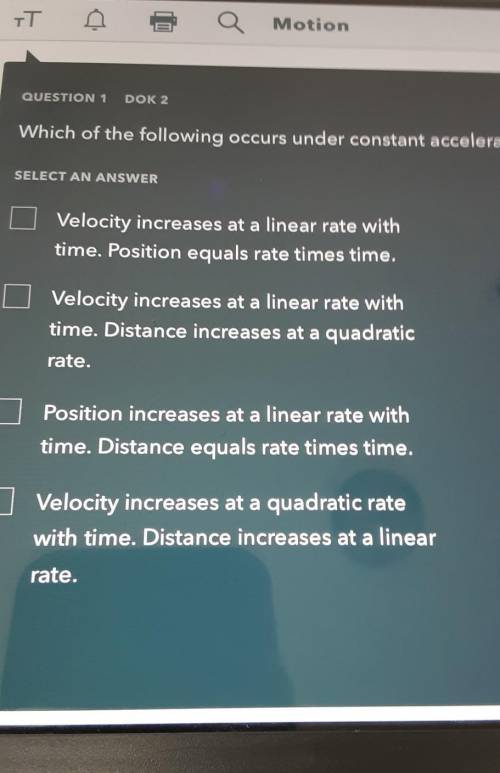
Physics, 07.01.2021 23:20 hugbug2554
Which of the following occurs under constant acceleration? SELECT AN ANSWER Velocity increases at a linear rate with time. Position equals rate times time. Velocity increases at a linear rate with time. Distance increases at a quadratic rate. Position increases at a linear rate with time. Distance equals rate times time. Velocity increases at a quadratic rate with time. Distance increases at a linear rate.


Answers: 2


Other questions on the subject: Physics

Physics, 22.06.2019 22:00, kobiemajak
Hat is the most commonly cited cause of occupational injuries in the healthcare sector? a. repositioning of patients b. manual pipetting c. slips and trips d. workplace violence
Answers: 3

Physics, 23.06.2019 00:00, jumana3
Does the distance travelled by an oscillating mass between times t=0 and t2 equal the displacement of the particle over the same time period if t2> t/2? hint: consider a sine wave starting at t1=0, then consider a closing wave starting at t1=0, for your explanation.
Answers: 1

Physics, 23.06.2019 12:00, sanakhalid9728
What belongs in the areas marked x and y? x: the internal energy of a piston system increases as heat is added and rises to a cool area y: as thermal energy is added to a container, some of the energy is lost to the environment x: as thermal energy is added to a container, some of the energy is lost to the environment y: the internal energy of a piston system increases as heat is added and rises to a cool area x: a cold spoon placed in hot liquid gets warmer y: thermal energy is converted to light energy x: thermal energy is converted to light energy y: a cold spoon placed in hot liquid gets warmer
Answers: 3
You know the right answer?
Which of the following occurs under constant acceleration? SELECT AN ANSWER Velocity increases at a...
Questions in other subjects:








History, 24.01.2020 21:31





